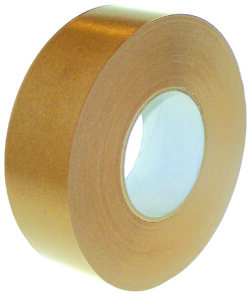There is growing pressure (and a desire) for businesses to become more environmentally friendly and to demonstrate this commitment to customers.
If you are looking for ways to improve your environmental credentials, there are many “quick wins” out there to help you make simple switches. One example is to use gummed paper tape to seal corrugate.
Made from sustainable and naturally degradable materials, gummed paper tape is 100% recyclable and does not require removal from cartons before recycling. It’s also biodegradable, which makes it a perfect environmentally friendly alternative to standard packing tape.
Substituting paper tape for plastic tape also removes literally miles of single use plastic from your operation.
Of course, just substituting packaging products for more sustainable solutions isn’t enough to help the environment alone. Businesses also need to consider how they can use less packaging – how they can do more with less material.
Switching to lighter, thinner materials that offer comparable protection is a great way to reduce your packaging use and deliver a smaller carbon footprint.
Use less material
Gummed paper tape is a good example of how the “more with less” principal can work in packaging.
If the tape is applied with an electronic dispenser, which can be set to cut your tape to a uniform size, you are ensuring that the correct amount of tape is used on each pack. This helps make sure your packers aren’t applying too much material, not only giving you a better yield from each roll, but also minimising wastage.
The excellent bonding properties of gummed paper tape also mean that you don’t need to apply several overlapping lengths to ensure a good seal, as can be the case with standard tape. Just one length of paper tape is enough to ensure a strong grip, again reducing the amount of material needed.
Gummed paper tape is strong – when applied it creates a “bond” with the corrugate, making the entire pack stronger and more secure. Better product protection means less damages, reducing the CO2 emissions (and costs) associated with replacing broken or lost products.
Why not contact us today?









